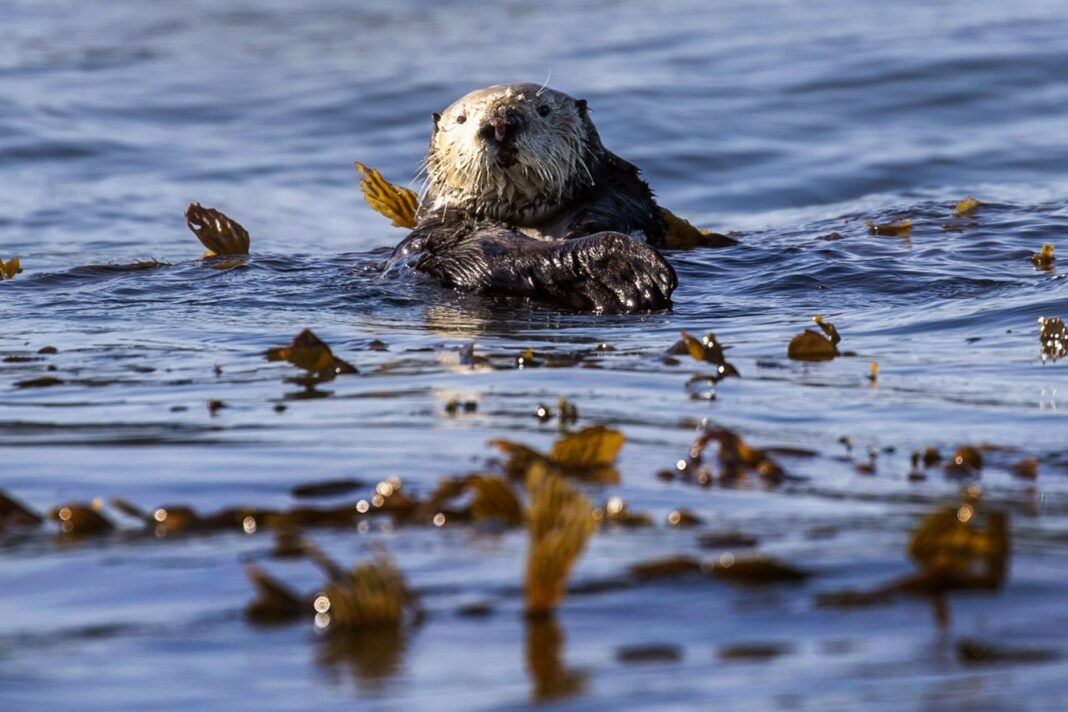Tens of thousands of sea otters once roamed the California coast, but fur traders hunting their pelts decimated nearly all populations north of the Golden Gate by the early 20th century. But what would it mean to try to bring these fuzzy, frolicking semi-aquatic mammals, which have been protected under the Endangered Species Act since 1977, back to local waters? Last year, the U. S.
Fish and Wildlife Service along the West Coast in the hopes that their return will help preserve kelp forests, curb overpopulation of sea urchins and keep the Bay’s ecosystem healthy. On their quest to pinpoint ideal sites from the northern tip of Oregon to the San Francisco Bay, the federal government’s otter dreamers came to Emeryville on Thursday, the final stop of a regarding the potential impact of the plan on fishing, industry and other socio-economic factors. Lilian Carswell, the Southern Sea Otter Recovery and Marine Conservation Coordinator for the U.
S. Fish and Wildlife Service, is one of the people seeking out the most biologically ideal future home for sea otters. Visiting areas that have not seen sea otters for more than 150 years, she said it was vital to not only share their own otter expertise, but also source local knowledge of the existing environment and community concerns.
For example, in response to some divers’ fear that otter predation will eradicate what little abalone are left to hunt, Carswell shared research that showed how areas that have dense otters also have dense abalone, especially in deep crevasse habitats, which she said “smashes that myth. ” “A lot of times what you don’t know strikes a lot of fear,” Carswell said while manning one of six booths set up at the Emeryville Senior Center–a sort of science fair dedicated entirely to otters. “We know a lot of general things, but we really want to understand the subtleties of people’s values on the coasts — hearing from people who live and work and recreate in those waters.
“A lot of that information is not information you can just find in a scientific paper. ” On a technical level, Carswell said the Bay Area has plenty of physical infrastructure to support reintroduction — such as boat launches and nearby rehab facilities — and a “fantastically huge area of amazing” habitat. However, there’s also a lot of human impacts, ranging from shipping routes and legacy pollutants in sediment to the threat of oil spills and chronic oil leakage.
So what does that combination mean for the feasibility of otter reintroduction here? Carswell said no particular deadline has been set for the Fish and Wildlife Service to make any decisions, and there’s also no guarantee that a pilot program will happen at all. Defending that lack of clarity, she said it was important for the team to make sure they had as much community input as possible before finalizing a plan, rather than presenting a fully formed proposal and then paying lip service to public involvement. “People might think that we’re further along than we really are, but we are still at the ground floor,” Carswell said, kindly refusing to give Emeryville and the greater Bay Area a grade for its potential to provide a home to otters.
“This test won’t be graded — it’s going to be pass/fail only. It’s really too soon to talk about particular sites. ” Emeryville Mayor John Bauters applauded the education and feedback shared during Thursday’s event.
An adamant supporter of the proposal to expand where otters make their home, he said it is vital for researchers to successfully strike a balance between both economic vitality and ecological sustainability before making any decisions on otter reintroduction. “Everybody knows otters as these cuddly, furry sea and land creatures that adorn parts of the California coast, but the reality is that many people don’t actually understand the human interference with otter habitat and the history of otters and their important role they play ecologically to overall food web sustainability and biodiversity,” Bauters said. “The Bay Area would benefit from giving serious consideration to the reintroduction of the southern sea otter to this area.
That comes with a lot of challenging conversations, but that’s where we’re at. ” Otters, who live in a harem typically made up of a male and three to five females, won’t stay somewhere where they don’t have enough food or the right kind of habitat. While Bauters was the one who proposed the Emeryville Crescent for consideration, that’s one reason why he’ll be happy wherever otters may eventually end up — whether up in Oregon, Sonoma County or along his city’s shoreline.
“If we drop them in the Bay Area, will they have a viable environment that’s free of boat traffic that would disrupt their safety or sleep, or hunting? If we don’t create a space for them or have a space protected for them that is sustainable, they won’t stay,” Bauters said. “(Otters) don’t have to be in my backyard to get the outcome we need. ”.
From: mercurynews
URL: https://www.mercurynews.com/2023/06/30/federal-otter-tour-comes-to-east-bay-to-smash-myths-and-seek-repopulation-sites/



